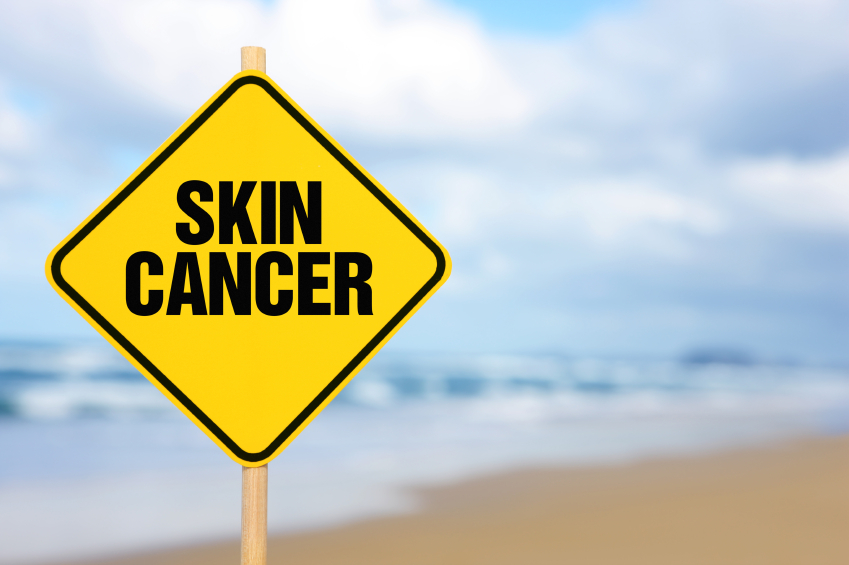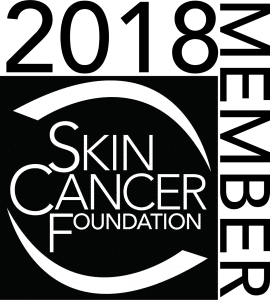 Unfortunately, one in five Americans will develop some form of skin cancer during the course of their lifetime. While we all enjoy being outdoors during this fun and relaxing time of year, dermatologists are compelled to encourage our patients to practice sun safety in order to reduce the health risks associated with the summer sun. While the most common forms of skin cancer can be cured with surgery, some forms of skin cancer, such as melanoma, can be deadly. Despite public health efforts, the incidence of melanoma has been increasing steadily over the past thirty years. Sun exposure is the biggest preventable risk factor in terms of the development of all forms of skin cancer.
Unfortunately, one in five Americans will develop some form of skin cancer during the course of their lifetime. While we all enjoy being outdoors during this fun and relaxing time of year, dermatologists are compelled to encourage our patients to practice sun safety in order to reduce the health risks associated with the summer sun. While the most common forms of skin cancer can be cured with surgery, some forms of skin cancer, such as melanoma, can be deadly. Despite public health efforts, the incidence of melanoma has been increasing steadily over the past thirty years. Sun exposure is the biggest preventable risk factor in terms of the development of all forms of skin cancer.
It has been well established that the harm from sunlight is due to ultraviolet rays. Two main types of ultraviolet rays reach the earth – UVA and UVB. UVA rays are primarily responsible for wrinkling and other signs of aging in the skin, and UVB rays are primarily responsible for sunburns. While UVB rays are blocked by window glass (therefore, you do not get a sunburn sitting by the window on a sunny day), UVA rays can penetrate glass and, therefore, can cause damage to the skin even while driving in a car, for example. Both UVA and UVB rays contribute to the development of skin cancer. In fact, the United States Department of Health and Human Services and the International Agency of Research on Cancer have placed ultraviolet radiation from the sun, as well as from artificial sources such as tanning beds, in the category of carcinogens (cancer causing substances).
Although the days of slathering baby oil and iodine on the skin to achieve a tan are long past, tanning, for many, has remained desirable. It is important to realize, however, that there is no such thing as a “healthy” tan. The development of a tan is a protective response by the cells in the skin and it signifies cell damage. Simply put, tanning ages the skin and increases the risk for skin cancer.
There are a number of critical steps that can be taken to protect oneself from the sun’s damaging rays, particularly during these summer months. When possible, seek shade when the sun’s rays are strongest, between 10am and 2pm. When heading outdoors, consider protective clothing with a built in Sun Protective Factor (SPF) – many styles and types of fabrics are available that can be comfortable, look great and keep the skin protected. Wide-brimmed hats and high quality sunglasses (that block UVA and UVB rays) are key. Apply large amounts of a broad-spectrum (protects from UVA and UVB rays), water-resistant sunscreen with an SPF of at least 30 to all areas of exposed skin. In order to get full protection from any sunscreen, it must be used properly. One ounce (approximately one full shot glass) of sunscreen is generally needed to cover all exposed areas of the body – most of us do not use enough sunscreen with each application. Also, check expiration dates on those old bottles of sunscreen lying around – they can become ineffective if they have expired. Try to apply sunscreen 15 minutes before heading outdoors, and be sure to apply to neglected areas such as the ears, neck and backs of hands. Apply a lip balm with an SPF of 30 or higher to the lips. Remember to reapply sunscreen at least every two hours or after swimming or sweating heavily. While it is convenient to have sunscreen products in makeup and facial moisturizers, most people do not apply enough of these types of products to the skin to get the full SPF protection, and they should not be used in place of standard sunscreen. Fortunately, there is a wide variety of sunscreen products available for consumers. In general, thicker creams work well for the face and areas of dry skin, stick formulations are helpful when applying around the eyes, and gels are quick and easy to apply to hairy areas such as the scalp or chest and arms in men. For those with sensitive skin, products containing only zinc oxide and titanium oxide may be preferable. These ingredients are also felt to be safest to use in young children and infants. The best sunscreen is simply the one that is used regularly, and it often is a matter of personal preference. However, most dermatologists have favorites and can make specific recommendations. Whichever product is used, research studies have shown that once a person begins using sunscreen regularly, his or her risk of developing skin cancer begins to decrease. In addition to following sun safety measures, check your skin every few months and see a dermatologist if you notice anything changing, growing or bleeding/not healing. Our profession is dedicated to helping you remain active, vital, youthful and, above all, healthy.































